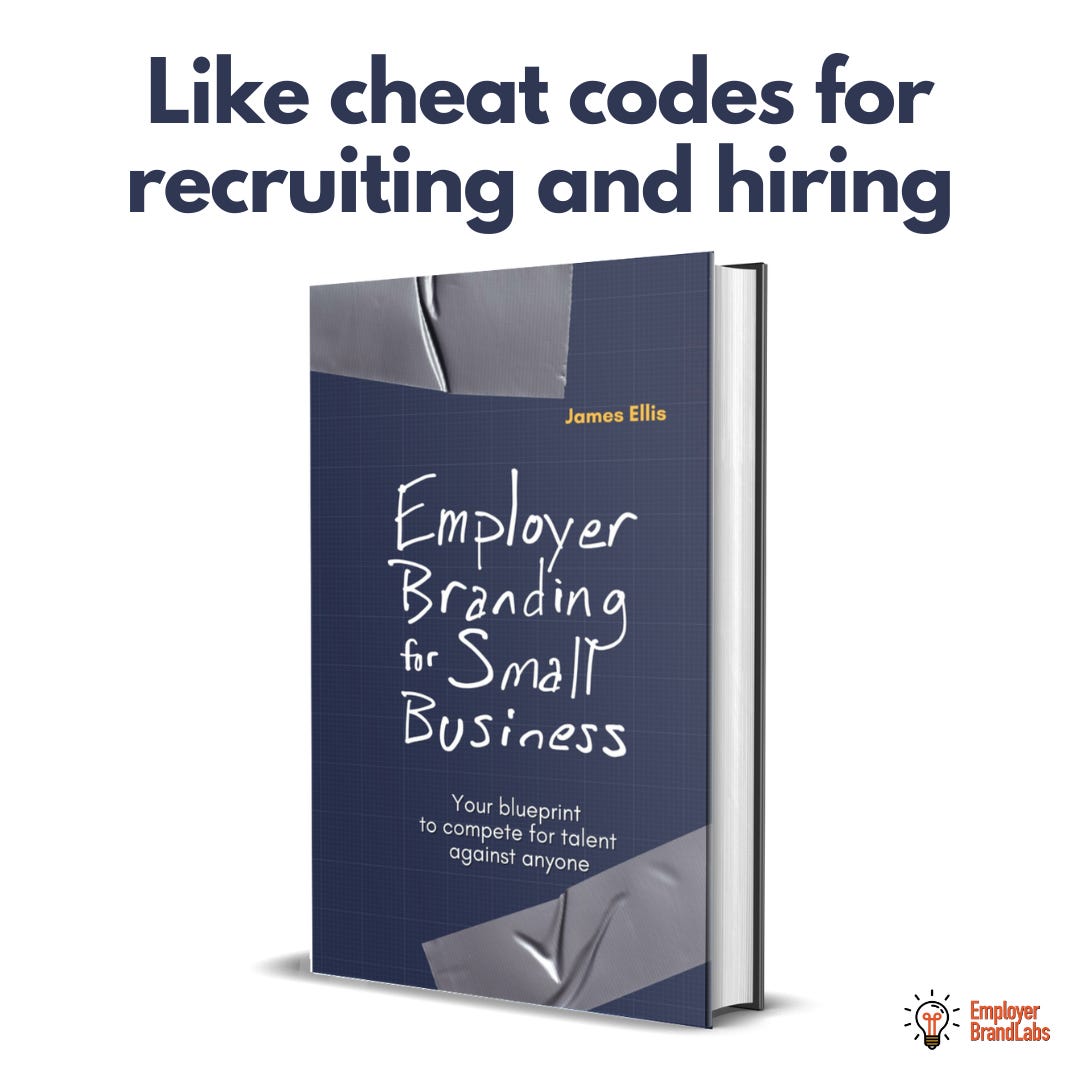If you’re on the fence about buying Employer Branding for Small Business, I’ll add in a bonus: The complete video course (normally a $450 value) for free.
Send me a photo of you holding the book or a receipt for the physical book and I’ll send you the discount code to get you full access to the video-on-demand course.
++++
[My apologies if you’re like me and the subject line made you start singing Smashing Pumpkins in your head…]
Billy Corgan with hair! Anyway!
We all know that for an employer brand to really work, it must be embraced by leadership.
More accurately, we know that in order for the brand to be accepted by leadership, it must reflect their view of the company.
And that’s an issue.
In all likelihood, most of your leaders joined years ago. If you’re in a unicorn or startup, they might even be a founder, remembering the company when it was only them and the paperwork on the company name.
Think of the doting parent who often sees their child as younger than they actually are, projecting memories of them as infants and toddlers onto their 8- or 10-year-olds. The memories formed in the distant past inform their perception of today.
I’ve worked in many companies where the “founding clique” had a very clear picture of the company, referencing that mental image at all-hands meetings and in Slack. But the company no longer matched that picture. In fact, 50% of all employees had joined in the last year while the clique was reminiscing about “the good old days” from more than five years previous.
Your leadership might remember the early days when they were hustling for their first client, leading them to describe themselves as scrappy, all while taking lavish executive team retreats at ski resorts. Like in the Matrix when the “residual self-image” means Neo looks like himself because of the picture he has of himself in his mind.
When these two perspectives, the way leadership thinks of the company based on history and the way employees see the company today, don’t line up, your job is to help break the cognitive dissonance. That happens first by pushing them to see reality. But more importantly, you need to move their focus forward to the future. No one in the company is more responsible for the direction, of the future of the company than the readership team. And it is that perspective they need to be adding to the employer brand.
Yes, who the company was relative to what it is today shows progress, it shows ambition, and performance. But it is the employees who embody those ideas now.
It might be your job to help leadership see itself as it is today to help them start looking to the future.
++++
Bill Fanning (of Greetr fame) and I are talking about the intersection of employer branding and candidate experience next week. You might want to check it out.
***This Newsletter Contains No ChatGPT***
-James Ellis [LinkedIn] [Website]
###





